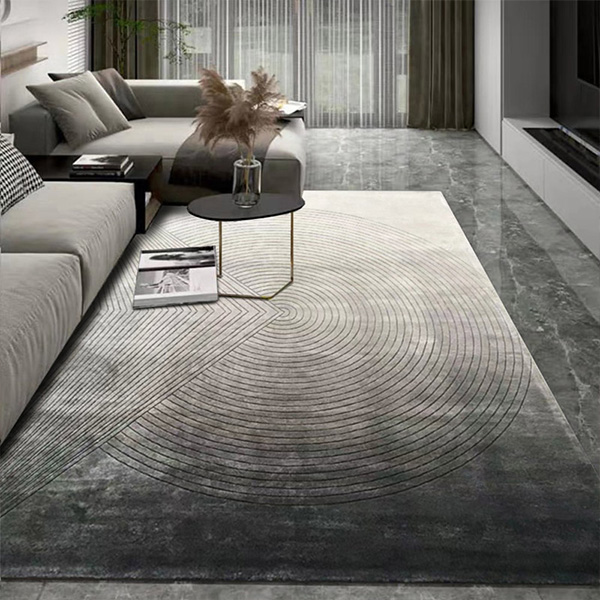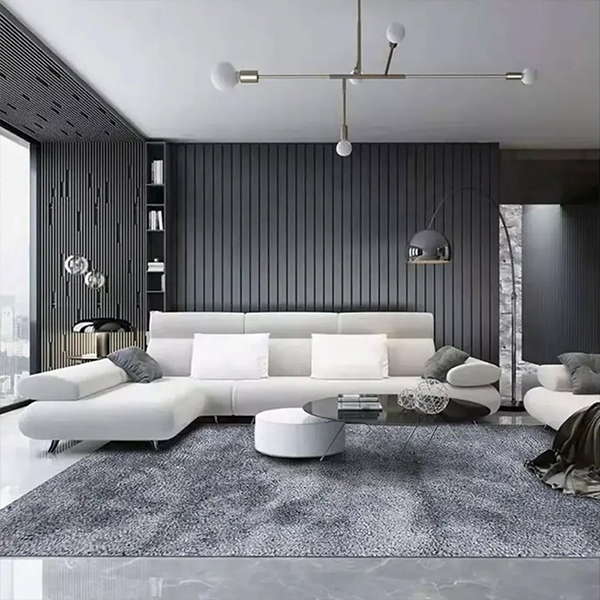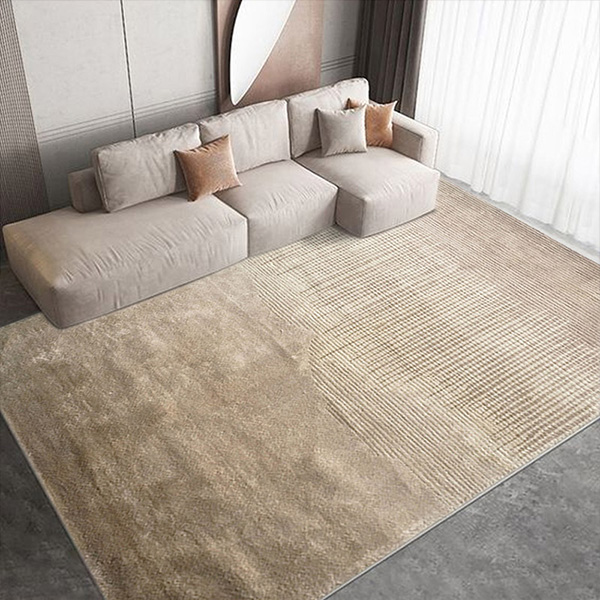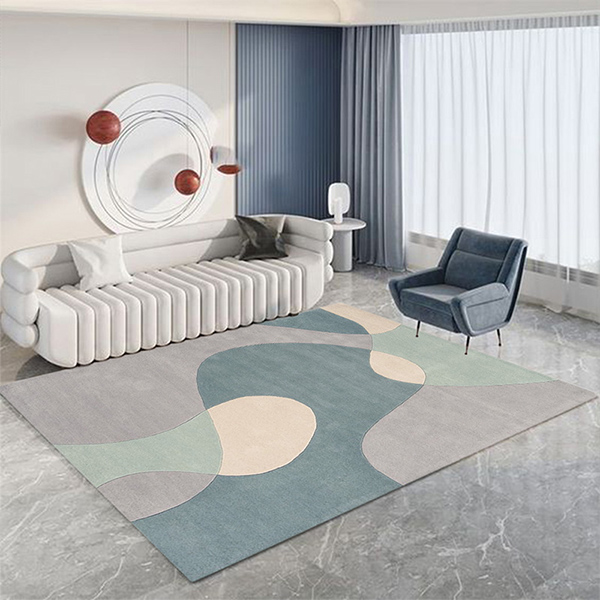Known in the industry as the “fifth wall,” flooring can become a major decorative element simply by choosing the right rug. There are many different types of carpets, with many different designs, shapes and sizes, as well as many different styles, patterns and colors of carpets. At the same time, choosing the best type of carpet for the living room is naturally different from choosing the best type of carpet for the bedroom. But with a little thought, planning and research, you can find the perfect carpet to match your style.
Rugs are generally classified by construction and fall into two main categories: natural fiber carpets and synthetic fiber carpets.
In the natural fiber category, you will find tufted or machine-made wool, cotton, silk, jute, sisal, seaweed or bamboo carpets, as well as leather or sheepskin. Combining beauty with luxury underfoot, natural fiber carpets are more sustainable and environmentally friendly, but they are not as durable or resistant to staining and fading as synthetic fiber carpets.
Synthetic carpet fibers include polypropylene, nylon, polyester and acrylic, which are exceptionally durable, vibrant colors and fade resistant. Synthetic carpets are also stain resistant, making them a great choice for dining rooms and kitchens. They are durable, easy to clean and mildew resistant, making them ideal for high traffic areas such as indoor/outdoor or hallway carpets. Many synthetic rugs are also machine washable, making them the best bathroom rug.
Many outdoor rugs are made from synthetic fibers due to their style, vibrant colors, durability, and resistance to fading, mildew, and mildew. Some natural fibers, including bamboo, sisal, and hemp, are also used to make floor mats.
Wool is one of the oldest and most traditional carpet materials, and wool carpets are known for their softness, beauty, and durability. Wool is a durable natural fiber that is often hand woven, hand dressed, hand knitted, or hand tufted. Due to the fact that wool carpets are handmade, they tend to be more expensive than synthetic fibers. But since they are durable, they will last a lifetime. In fact, many antique and family rugs are made from wool.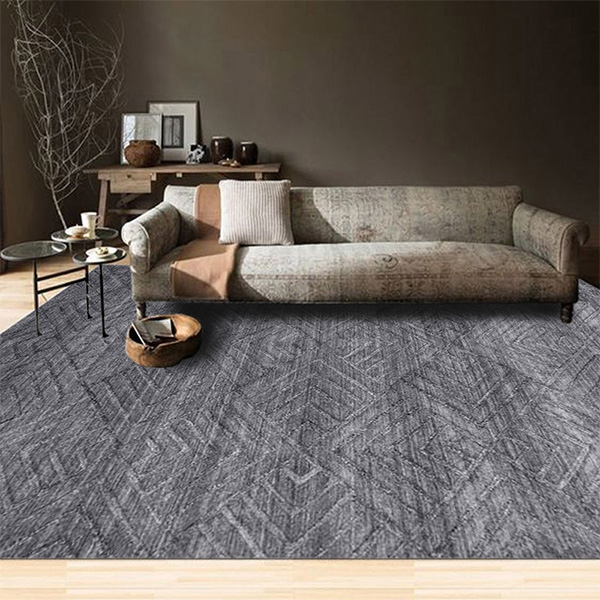
Because wool is so durable, wool rugs can be used almost anywhere in the home, with the exception of areas where moisture may be present, such as the kitchen or bathroom; in addition, wool rugs can usually only be spot-cleaned. Wool carpets are ideal for living rooms, bedrooms, hallways and stairs.
Cotton is another tried and true natural fiber that has historically been used to make affordable rugs. Since cotton is a relatively cheap natural fiber, it can be a good economical alternative to expensive natural fibers such as wool and silk. Cotton rugs are easy to clean and small rugs are machine washable, which explains why cotton rugs are often used in bathrooms and kitchens.
The disadvantage of cotton is that it fades rather quickly and is prone to staining. Cotton is also not as durable as other fibers. Cotton rugs often have a more casual look, so they’re perfect for less formal rooms in the home.
Silk is one of the most luxurious and expensive natural fibers used in carpets. Silk carpets are distinguished by their luster and softness, there is nothing more brilliant than silk. The colors of silk fibers are beautiful, so it’s no surprise that silk carpets are known for their rich colors and elegant designs. It is also a sustainable fiber and an environmentally friendly choice.
The main disadvantage of silk is that it is very delicate. Silk carpets are best used as an accent in low traffic areas. Silk carpets are difficult to clean properly, and professional cleaning specifically designed for silk is usually required.
Jute, sisal, seaweed and bamboo are all natural plant fibers that are sustainable and environmentally friendly. Rugs made from these fibers are comfortable on the feet and have a casual or coastal vibe, making them suitable for both indoor and outdoor use. If you choose one of these natural fibers for your floor carpet, make sure it is treated with preservatives to extend its lifespan.
One disadvantage of these plant-based natural fibers is that they fade easily and may not be as strong as synthetic or other natural fibers. These carpets are also prone to water absorption unless treated with a water repellent and are therefore susceptible to mildew.
Polypropylene, one of the most popular synthetic fibers for carpeting, is an affordable and durable alternative to natural fibers. Polypropylene is a solution dyed fiber, which means it has exceptional color fastness and high resistance to fading and staining. Polypropylene rugs are durable, can be washed with water or bleach, do not absorb moisture and are mildew resistant. Many fibers are also made from recycled plastic, making them more sustainable (though not entirely sustainable) than some other synthetic fibers.
Two other synthetic fibers are very popular for use in carpets: nylon and polyester. Rugs made from these fibers are generally inexpensive, stain-resistant, stain-resistant, and easy to clean. However, they are not as durable as some other fibers. Nylon rugs heat up in the sun and are prone to soiling, while polyester rugs can tangle and roll in high traffic areas. Because these fibers are man-made and non-degradable, they are not an environmentally friendly choice.
Another synthetic fiber used in carpets is acrylic, which is often used to mimic the look and feel of natural fibers. Acrylic is soft, silky and pleasant to the touch, the material also feels great underfoot. Acrylic is more expensive than other synthetic fibers, but not as expensive as most natural fibers.
The earliest carpets were handmade, and many of today’s more expensive and luxurious carpets are hand-woven, knotted, tufted, crocheted, or cut. But today there are also plenty of attractive and stylish machine-made rugs to choose from, including jacquard weave, machine weave and machine quilted styles.
The construction method puts a lot of emphasis on whether you want it to be flat or fluffy. The height and density of the fibers of the carpet is called the pile, which can be looped or cut pile. Most carpets are made from loop pile and are hand or machine woven. Cut pile, so named because the tops of the loops are cut off, is commonly used for wall-to-wall carpeting. There is also a type of carpet called “lint-free” carpet, also known as flat weave rug or flat weave rug.
Pile height is divided into three main categories. Shaggy carpets (between 0.5 and 3/4 inches thick) are the thickest and are considered the most comfortable carpets for bedrooms and living rooms, but in high traffic areas they can tangle and show signs of wear. Medium pile rugs (1/4″ to 1/2″ thick) combine comfort and durability and are a versatile choice. Low pile rugs (thicker than 1/4 inch) or pile free rugs are more durable and therefore the best type of rug for kitchens, stairs, hallways and entryways. There are also extra-high pile carpets, often referred to as shaggy carpets, which are 1 to 2 inches thick. Shag carpets are the fluffiest type of carpet, but they are generally considered more decorative than other carpets, but less durable.
Flat-weave carpets are strong and durable machine-woven carpets with little to very low pile. Flat carpets come in a variety of styles, including traditional Indian duri carpets, Turkish kilims, braid carpets, flat carpets, and rope stitch designs. Flat carpets do not have a backing, so they can be used on both sides. These carpets are easy to clean and ideal for high traffic areas and busy homes with children and pets. For example, flat cloth mats are often the best mats for dog hair because the fibers release the hair easily when vacuumed quickly.
Hand-tufted rugs are made using a tufting gun, which is loaded with individual threads, which are then threaded through a canvas backing to create a pattern. After the entire rug is stitched, a latex or similar covering is glued to the backing to hold the fibers in place. The fibers are cut to create an even pile and a smooth, soft surface for a comfortable soft feel underfoot. Many hand-tufted rugs are made from wool, but sometimes synthetic fibers are also used.
Handmade carpets are the oldest type of carpet weaving and are truly unique and one of a kind artifacts. Hand-woven carpets are made on large looms equipped with vertical warp threads and horizontal weft threads, which are knitted by hand in rows of warp and weft threads. Since both sides of the carpets are hand-knitted, they are truly double-sided.
The quality of a handmade carpet is measured by the number of knots per square inch: the more knots, the better the quality, and the more complex the pattern, the more expensive it will be. Because handmade rugs are works of art, they can be expensive and are best used in low-traffic areas and as a statement piece.
Another traditional handmade carpet is the hand-knitted design. Hand-knitted rugs are made by drawing small loops of fiber through canvas to create a soft, knotted texture. Once the fibers have been fully drawn through the canvas, a protective backing is applied to hold the fibers in place.
Crocheted rugs are usually made from wool or other natural fibers, but sometimes synthetic fibers are also used. Because it is handmade, hand hook rugs are quite expensive. However, unlike some other handmade styles, handmade rugs are quite strong and durable.
A special type of loom produces jacquard woven carpets known for their unique weave types including damask, mattress and dobby. Intricate and rich in pattern, these intricate weaves create a textural effect that adds depth and richness to a room at an affordable price.
Jacquard rugs can be found in almost any design using natural, synthetic or blended fibers. Since carpets are machine made, they are an extremely durable and smart choice for high traffic areas.
Machine-made rugs are affordable and durable, and come in just about any pattern, style, shape, size, or color. As the name implies, machine-made carpets are woven on mechanical looms and have uniform pile heights and serrated or knitted edges. Most machine-made carpets are made from synthetic fibers, making them easy to clean and resistant to stains and fading.
Machine-made carpets are one of the most popular rugs today due to their wide range and low price.
Whatever your space or decor style, there’s always a rug to complete any room. There are a few “rules” to keep in mind when buying a carpet, namely rules regarding size, shape, color, and pattern.
Rugs are designed to highlight the floor, but not completely hide it. In general, when choosing a carpet size, measure the room and subtract one foot from each side: for example, if your room measures 10 feet by 12 feet, you should buy an 8 foot by 10 foot carpet, which is very good. overall size. Other common rug sizes include 9′ x 12′, 16′ x 20′, 5′ x 8′, 3′ x 5′, 2′ x 4′.
Post time: Jul-14-2023






